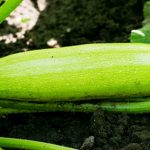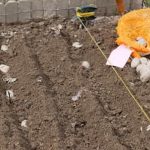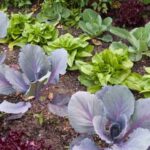Square foot gardening is a popular and efficient method of growing vegetables, and it’s particularly well-suited for planting fall vegetables. This method allows you to maximize your harvest in limited space, making it ideal for small yards or even balconies. In this article, we will explore the benefits of square foot gardening for fall vegetables and how you can make the most of this technique.
One of the main advantages of square foot gardening is its ability to optimize space. By dividing your garden into small square-foot sections, you can easily plan and organize your plantings. This method ensures that each vegetable has enough room to grow without competing for resources like water and nutrients. With proper spacing, you can grow a wide variety of fall vegetables in one compact area.
Another benefit of square foot gardening is its low maintenance requirements. The close proximity of plants not only makes watering more efficient but also deter weeds from taking root. Additionally, because the soil in each section can be customized with compost and fertilizers based on the needs of specific plants, you can create an ideal growing environment without wasting resources.
Square foot gardening is an accessible approach that even beginner gardeners can easily master. The techniques used are straightforward and require minimal experience or specialized equipment. Whether you have limited space or simply want to get the most out of your fall vegetable garden, square foot gardening offers a sustainable and productive solution.
Choosing the Best Fall Vegetables for Square Foot Gardening
When it comes to square foot gardening in the fall, choosing the right vegetables is crucial for a successful harvest. With the right selection, you can enjoy fresh, homegrown produce long after summer has ended. In this comprehensive guide, we will explore some of the best fall vegetables for square foot gardening and provide tips on how to choose them.
First and foremost, it’s important to consider your climate and growing zone when selecting fall vegetables for your square foot garden. Different types of vegetables have varying temperature requirements, so it’s essential to choose those that are well-suited to your area.
For example, if you live in a colder region, cold-hardy vegetables like kale, broccoli, and Brussels sprouts are excellent choices. On the other hand, if you live in a milder climate, you may have more options available such as lettuce, spinach, and radishes.
Another factor to consider is the growth habit of each vegetable. Some plants tend to spread out and take up more space while others grow vertically or have compact growth habits. In a square foot garden where space is limited, it’s important to choose vegetables that can thrive without overcrowding others.
Compact varieties of lettuce like ‘Tom Thumb’ or ‘Little Gem’ are great options for small spaces. Peas can also be trellised or grown vertically using stakes or a trellis system.
Additionally, keep in mind the average time from planting to maturity when selecting fall veggies for square foot gardening. This will help you plan your garden accordingly and ensure that you have a continuous harvest throughout the season. Fast-growing crops like radishes and baby greens can be harvested within 30 days of planting which allows for succession planting – sowing new seeds every few weeks for a steady supply of freshly picked produce.
Preparing Your Square Foot Garden for Fall Vegetables
When it comes to preparing your square foot garden for fall vegetables, proper soil preparation is key. The quality of your soil directly affects the health and productivity of your plants, so taking the time to ensure it is in optimal condition is essential. Here are some tips to help you get started:
- Test Your Soil: Before planting, it’s important to know the pH level and nutrient content of your soil. You can do this by using a soil testing kit or by sending a sample to a local agricultural extension office. Once you have the results, you can make any necessary adjustments to create an ideal growing environment for your fall vegetables.
- Amend Your Soil: Depending on the results of your soil test, you may need to amend your soil to improve its fertility and structure. Adding organic matter such as compost or well-rotted manure can help improve drainage, water retention, and nutrient availability. Be sure to mix these amendments thoroughly into the top few inches of soil before planting.
- Provide Good Drainage: To prevent waterlogged roots and other moisture-related issues, ensure that your square foot garden has good drainage. If needed, consider incorporating raised beds or adding organic material like peat moss or vermiculite to improve drainage.
Once your soil is prepared, it’s time to start planting your fall vegetables in your square foot garden. Here are some additional planting tips to maximize success:
- Follow Plant Spacing Recommendations: In square foot gardening, plants are spaced closer together than traditional gardening methods. Refer to the recommended spacing guidelines for each vegetable and ensure that you’re following them accordingly. This efficient use of space helps maximize yields and makes good use of every inch in your garden.
- Utilize Succession Planting: To extend your harvest season, consider utilizing succession planting techniques in which new crops are planted as soon as the previous ones are harvested. This method ensures a continuous supply of fresh vegetables throughout the fall.
- Protect Against Cold Temperatures: As the fall season progresses, you’ll need to take measures to protect your plants from cold temperatures. Consider using row covers, cloches, or cold frames to provide additional insulation and extend your growing season.
With proper soil preparation and planting techniques, your square foot garden will be well-equipped to produce a bountiful harvest of fall vegetables. Be sure to continue providing the necessary care and maintenance outlined in subsequent sections of this article to ensure optimal growth and productivity.
Exclusive Tips for Successful Square Foot Gardening
Square foot gardening is a popular and efficient technique for growing fall vegetables. To make the most of your square foot garden, there are some exclusive tips that can help ensure successful growth and bountiful harvests. This section will provide insights into maintaining proper spacing, watering, and fertilizing in your square foot garden.
Maintaining proper spacing is crucial in square foot gardening to optimize plant growth and prevent overcrowding. Follow these tips to ensure that your fall vegetables have enough space to thrive:
- Use a grid system: Divide your garden into equal squares using a grid system. This will help you visualize the available space and ensure that each plant receives the appropriate amount of room.
- Follow seed packet instructions: Different vegetables have varying spacing requirements. Refer to the instructions on the seed packet or consult a reliable gardening resource to determine the recommended spacing for each crop.
- Thin out seedlings: If you have sown seeds closely together, thin out the seedlings once they have sprouted. Remove the weakest plants, leaving behind only the healthiest ones that meet the required spacing guidelines.
Watering is another essential aspect of square foot gardening for fall vegetables. Adequate moisture is necessary for plant growth, but overwatering can lead to root rot or other issues. Consider these tips when it comes to watering your square foot garden:
- Water deeply but infrequently: Instead of watering lightly every day, it’s better to water deeply once or twice a week. This encourages plants to develop deep root systems, making them more resilient during dry periods.
- Use drip irrigation or soaker hoses: These methods deliver water directly to the base of plants, minimizing evaporation and ensuring efficient water usage.
- Check soil moisture before watering: Before reaching for your watering can or hose, check if your plants actually need water by sticking your finger about an inch into the soil near their roots. If it feels dry at that depth, it’s time to water.
Fertilizing your square foot garden can provide essential nutrients for robust plant growth and higher yields. Consider these tips for effective fertilization:
- Use organic compost: Incorporate organic compost into your soil before planting. Compost not only provides nutrients but also improves soil structure and water retention.
- Avoid overfertilization: Too much fertilizer can harm plants and pollute the environment. Follow the instructions on the packaging and consider using slow-release or organic fertilizers to avoid burning plants with excessive nutrients.
- Regularly monitor nutrient levels: Look out for signs of nutrient deficiencies in your plants, such as yellowing leaves or stunted growth. Conduct regular soil tests to ensure that your garden has the right balance of nutrients.
By maintaining proper spacing, watering, and fertilizing techniques in your square foot garden, you can create optimal growing conditions for your fall vegetables. These exclusive tips will help you achieve healthy plants and abundant harvests throughout the season.
Maximizing Yield
Companion planting is a technique that has been used for centuries to maximize yield in vegetable gardens. When it comes to square foot gardening with fall vegetables, companion planting can be particularly effective. By strategically pairing certain plants together, you can enhance growth, deter pests, and improve overall plant health.
One popular combination for square foot gardening with fall vegetables is planting lettuce alongside onions. Lettuce benefits from the shade provided by the taller onion plants while onions naturally repel pests that could damage lettuce leaves. Additionally, the shallow root systems of lettuce and onions do not compete heavily for nutrients or water, making them ideal companions in a square foot garden.
Another beneficial combination for maximizing yield in your square foot garden is planting radishes alongside carrots. Radishes are quick-growing and help to break up compacted soil, creating space for carrots to grow deeper and develop straight roots. The radishes also act as a natural pest deterrent for carrot flies, which can negatively impact carrot production.
In addition to these specific combinations, there are several general principles of companion planting that can be applied to square foot gardening with fall vegetables. For example, mixing different types of vegetables together can help create diversity within your garden ecosystem and reduce the risk of widespread pest or disease outbreaks.
By implementing companion planting techniques in your square foot garden, you can increase overall yield and promote healthier plant growth. Experiment with different combinations based on the needs and preferences of your chosen fall vegetables to find what works best for your specific garden environment.
Expert Recommendations
When it comes to square foot gardening in the fall, choosing the right varieties of vegetables is crucial for a successful harvest. Different vegetables thrive in different conditions, so selecting the top varieties for your specific climate and soil is key. Here are some expert recommendations for the top varieties of fall vegetables that are well-suited for square foot gardening.
- Lettuce: Lettuce is an excellent choice for fall square foot gardening because it can withstand cooler temperatures and has a relatively short maturity period. Some popular lettuce varieties include Butterhead, Romaine, and Looseleaf. These types of lettuce can be planted closely together in a 1-foot by 1-foot square and can provide a continuous harvest throughout the season.
- Broccoli: Broccoli is a cold-hardy vegetable that thrives in cooler temperatures and can be grown intensively in a square foot garden. Varieties such as ‘Green Magic’ or ‘Belstar’ are recommended for their compact growth habit and high yield potential. When planting broccoli in your square foot garden, allow approximately one plant per square foot to ensure they have enough space to grow.
- Carrots: Carrots are root vegetables that do well in fall square foot gardening due to their ability to tolerate colder weather. Choose shorter varieties like ‘Parisian’ or ‘Little Finger,’ which are perfectly suited for small spaces like a square foot garden. Thinly sow carrot seeds within each square to allow proper spacing between plants, ensuring good airflow and preventing overcrowding.
- Radishes: Radishes are fast-growing cool-season crops that add color and flavor to any fall garden bed. They can be sown directly into separate squares at a spacing of about 4 inches apart, allowing them room to develop their characteristic round shape underground.
By incorporating these top varieties into your fall square foot garden, you’ll increase your chances of success while enjoying an abundant harvest of fresh and flavorful vegetables. Remember to follow specific planting instructions for each variety, such as correct spacing and depth, to give your plants the best start possible.
Harvesting and Preserving Your Fall Vegetables from a Square Foot Garden
Whether you are new to square foot gardening or have been practicing this method for a while, learning how to harvest and preserve your fall vegetables is essential for maximizing the benefits of your garden. This section will provide you with best practices and creative recipes to help you make the most of your harvest.
Harvesting Best Practices
When it comes to harvesting fall vegetables in a square foot garden, timing is key. Many vegetables are best when harvested at their peak ripeness, so it’s important to know when to pick each type of vegetable.
For example, leafy greens like lettuce and spinach should be harvested when the outer leaves are large enough to use but before they become bitter or bolt. Root vegetables such as carrots and radishes should be pulled once they have reached their desired size.
Additionally, it’s crucial to handle your harvested vegetables with care. Avoid bruising or damaging the produce during harvest, as this can accelerate spoilage. Use a sharp knife or pruning shears for harvesting stems or fruits, and gently lift root vegetables out of the soil without pulling too forcefully.
Preserving Techniques
Preserving your fall vegetables allows you to enjoy them beyond the growing season. There are various methods you can use to preserve your harvest:
- Freezing: Many fall vegetables can be blanched and frozen for long-term storage. Blanching involves briefly boiling the vegetables before rapidly cooling them in ice water. This process helps retain color, texture, and flavor.
- Canning: Another preservation method is canning, which involves using heat and pressure to seal jars filled with cooked vegetables. Canned vegetables can last for several months or even years if done properly.
- Pickling: Pickling is a popular way to preserve fall vegetables such as cucumbers, peppers, and green beans. By immersing these vegetables in a vinegar-based brine solution, you can create tangy and flavorful pickles that can be enjoyed throughout the year.
Creative Recipes
Once you’ve harvested your fall vegetables from a square foot garden, it’s time to get creative in the kitchen. Here are a few recipes that make the most of these seasonal delights:
- Roasted Root Vegetables: Toss your harvested root vegetables, such as carrots, potatoes, and beets, in olive oil with salt, pepper, and your favorite herbs. Roast them in the oven until they are tender and caramelized for a delicious side dish.
- Fall Harvest Salad: Combine freshly harvested lettuce or other leafy greens with roasted butternut squash, pomegranate seeds, crumbled feta cheese, and a simple vinaigrette dressing for a vibrant and nutritious salad.
- Vegetable Soup: Utilize a variety of fall vegetables in a comforting vegetable soup. Saute onions, garlic, and celery before adding diced tomatoes, broth, and an assortment of chopped vegetables like carrots, zucchini, and cabbage. Add herbs and spices of your choice for added flavor.
By following these harvesting best practices, preserving techniques, and exploring creative recipes for your fall vegetables from a square foot garden, you will savor the rewards of your hard work long after the growing season ends.
Common Challenges in Square Foot Gardening with Fall Vegetables
Square foot gardening is a popular and efficient method of growing vegetables, but like any form of gardening, it can come with its own set of challenges. In this section, we will address some common challenges that gardeners may encounter when growing fall vegetables in their square foot gardens and provide practical solutions to overcome them.
One common challenge in square foot gardening with fall vegetables is pest infestation. As the weather cools down, pests such as aphids, caterpillars, and slugs can become more active and cause damage to your plants. To prevent pest infestations, consider implementing natural pest control methods such as companion planting or using organic insecticidal soaps. Additionally, regularly inspecting your plants for any signs of pests or disease can help catch problems before they become widespread.
Another challenge that gardeners may face is nutrient deficiencies in the soil. Since square foot gardens have limited space, it’s important to ensure that the soil is rich in nutrients to support healthy plant growth. One solution to this challenge is regularly adding organic matter or compost to replenish the soil’s nutrients. Conducting a soil test can also help identify any specific nutrient deficiencies and allow you to make targeted amendments.
Watering can also be a challenge in square foot gardening, especially during the fall season when rainfall may be inconsistent. Overwatering can lead to root rot and other water-related issues, while underwatering can cause stunted growth and poor crop yield. Installing a drip irrigation system or using a soaker hose can help ensure that your plants receive consistent moisture without overwatering. It’s also important to monitor the moisture levels in the soil and adjust your watering schedule accordingly.
| Challenge | Solution |
|---|---|
| Pest infestation | Use natural pest control methods and regularly inspect plants |
| Nutrient deficiencies | Regularly add organic matter or compost to enrich the soil |
| Watering issues | Install drip irrigation or use a soaker hose; monitor moisture levels in the soil |
By understanding and addressing these common challenges, you can ensure a successful square foot gardening experience with fall vegetables. With proper planning, maintenance, and problem-solving, you can enjoy a bountiful harvest of nutritious and flavorful crops from your square foot garden.
Taking It to the Next Level
Extending the fall vegetable season in your square foot garden allows you to continue enjoying fresh, homegrown produce well into the cooler months. By implementing a few strategies and making some adjustments, you can maximize your harvest and keep your garden productive for longer.
Cold Frames and Row Covers
One effective way to extend the growing season is by using cold frames and row covers in your square foot garden. Cold frames are structures made of transparent material that trap heat from the sun, creating a miniature greenhouse effect. This helps to protect plants from frost and cold temperatures, allowing them to thrive even in cooler weather.
Similarly, row covers are lightweight fabrics or mesh sheets that create a protective barrier around plants, shielding them from harsh elements while still allowing sunlight to penetrate. These coverings can be used individually or in combination with each other to provide additional insulation and protection for your fall vegetables.
Planting Frost-Tolerant Varieties
Another way to extend the fall vegetable season is by choosing frost-tolerant varieties for your square foot garden. These varieties have been specifically bred or selected for their ability to withstand lower temperatures and continue producing well into fall or even winter.
Some popular frost-tolerant vegetables include kale, Swiss chard, Brussels sprouts, broccoli, carrots, radishes, and spinach. By planting these varieties in your garden, you can ensure that you have a constant supply of fresh produce as the temperatures drop.
Successive Planting
Successive planting is a technique where you stagger the planting of seeds or seedlings at regular intervals throughout the growing season. This allows you to maintain a continuous harvest by ensuring that new plants are always ready to replace those that have finished producing. By implementing this technique in your square foot garden during fall, you can prolong the productivity of your garden.
For example, if one square foot is dedicated to lettuce, you can plant a few squares every two weeks. As one square finishes producing, another will be just reaching maturity, and you can continue harvesting fresh lettuce throughout the season.
By taking these steps to extend the fall vegetable season in your square foot garden, you can enjoy a bountiful harvest well into the cooler months. Whether using cold frames and row covers, choosing frost-tolerant varieties, or practicing successive planting, these strategies will help maximize your garden’s productivity and ensure a constant supply of fresh produce for your table. Experiment with different techniques and enjoy the rewards of an extended growing season in your square foot garden.
Conclusion
In conclusion, square foot gardening for fall vegetables is a sustainable and productive approach to gardening that offers numerous benefits. With the ability to maximize small spaces and increase yield, square foot gardening allows individuals to grow their own nutritious and delicious fall vegetables with ease.
By following the comprehensive guide on choosing the best fall vegetables, preparing the soil, maintaining proper spacing, watering, and fertilizing, utilizing companion planting techniques, selecting top varieties, and even extending the fall vegetable season, gardeners can enjoy a successful harvest.
One of the key advantages of square foot gardening is its sustainability. By utilizing small raised beds or containers, this method reduces water usage and promotes efficient use of space. The compact design minimizes weed growth and can also deter pests, reducing the need for harmful chemicals. Additionally, square foot gardening encourages soil improvement through regular amending and composting.
Furthermore, square foot gardening is highly productive. By densely planting in a grid pattern within each square foot, gardeners can achieve higher yields compared to traditional methods. Maintaining proper spacing ensures each plant has enough room to grow while maximizing space efficiency. This approach also simplifies maintenance tasks such as weeding and harvesting.
Overall, square foot gardening for fall vegetables provides an accessible and rewarding way for beginners and experienced gardeners alike to cultivate their own food. From enjoying fresh produce straight from the garden to preserving it using creative recipes, square foot gardens offer endless possibilities for any home gardener. With its sustainable practices and high productivity potential, this approach truly represents a smart choice for those seeking a productive garden that fits into their busy lives.

If you’re looking to get into vegetable gardening, or are just looking for some tips on how to make your current garden better, then you’ve come to the right place! My name is Ethel and I have been gardening for years. In this blog, I’m going to share with you some of my best tips on how to create a successful vegetable garden.





